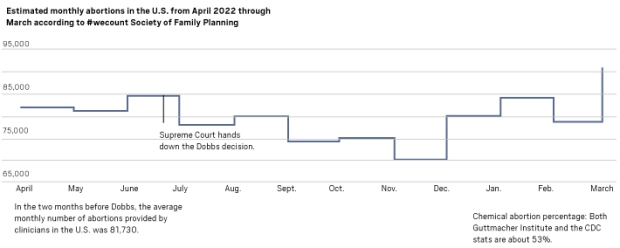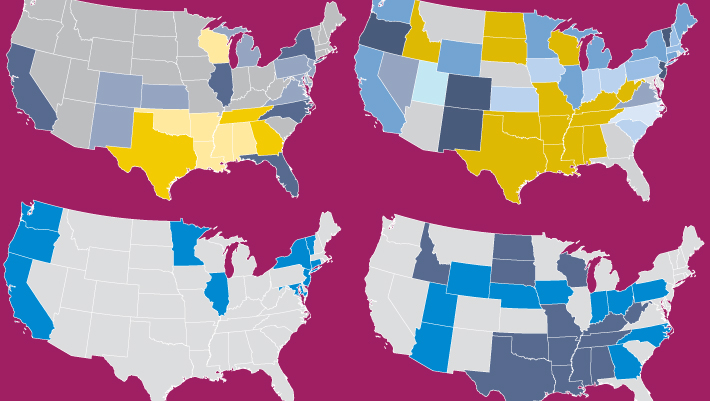A year without Roe v. Wade
In June 2022, the U.S. Supreme Court overturned Roe v. Wade, opening the door for states to ban abortion outright. In the year since the decision, 14 states have made abortion illegal while 11 have expanded access.
Terminology differs greatly depending on where one stands on the issue of abortion.
You can find the National Right to Life Committee’s report on the state of abortion in the U.S. here.
You can find the Center for Reproductive Rights report on abortion laws by state here.
Both use data from the CDC and the Guttmacher Institute (which was originally founded as a special research arm of Planned Parenthood) and considered more complete and reliable. You can find the Guttmacher Institute here.
Change in amount by state
#wecount is a national abortion reporting effort that aims to capture the shifts in abortion access by state following the June 24, 2022, Dobbs v Jackson’s Women’s Health Organization Supreme Court decision.
Since the Dobbs decision, compared to the average monthly number of abortions observed in the pre-Dobbs period of April and May 2022, there were 25,640 cumulative fewer abortions from July 2022 to March.
The National Right to Life Committee estimates there have been more than 64 million abortions in the U.S. since 1973.

In the two months before Dobbs, the average monthly number of abortions provided by clinicians in the U.S. was 81,730.
Chemical abortion percentage: Both Guttmacher Institute and the CDC stats are about 53%.
The Guttmacher Institute assessed a range of policies related to abortion in every state and selected approximately 20 types of abortion restrictions — including gestational age bans, waiting periods, insurance coverage bans and medication abortion restrictions — and approximately 10 protective policies, including state constitutional protections, abortion funding, insurance coverage for abortion and protections for patients and clinic staff. States were then assigned to…
Read the full article here







